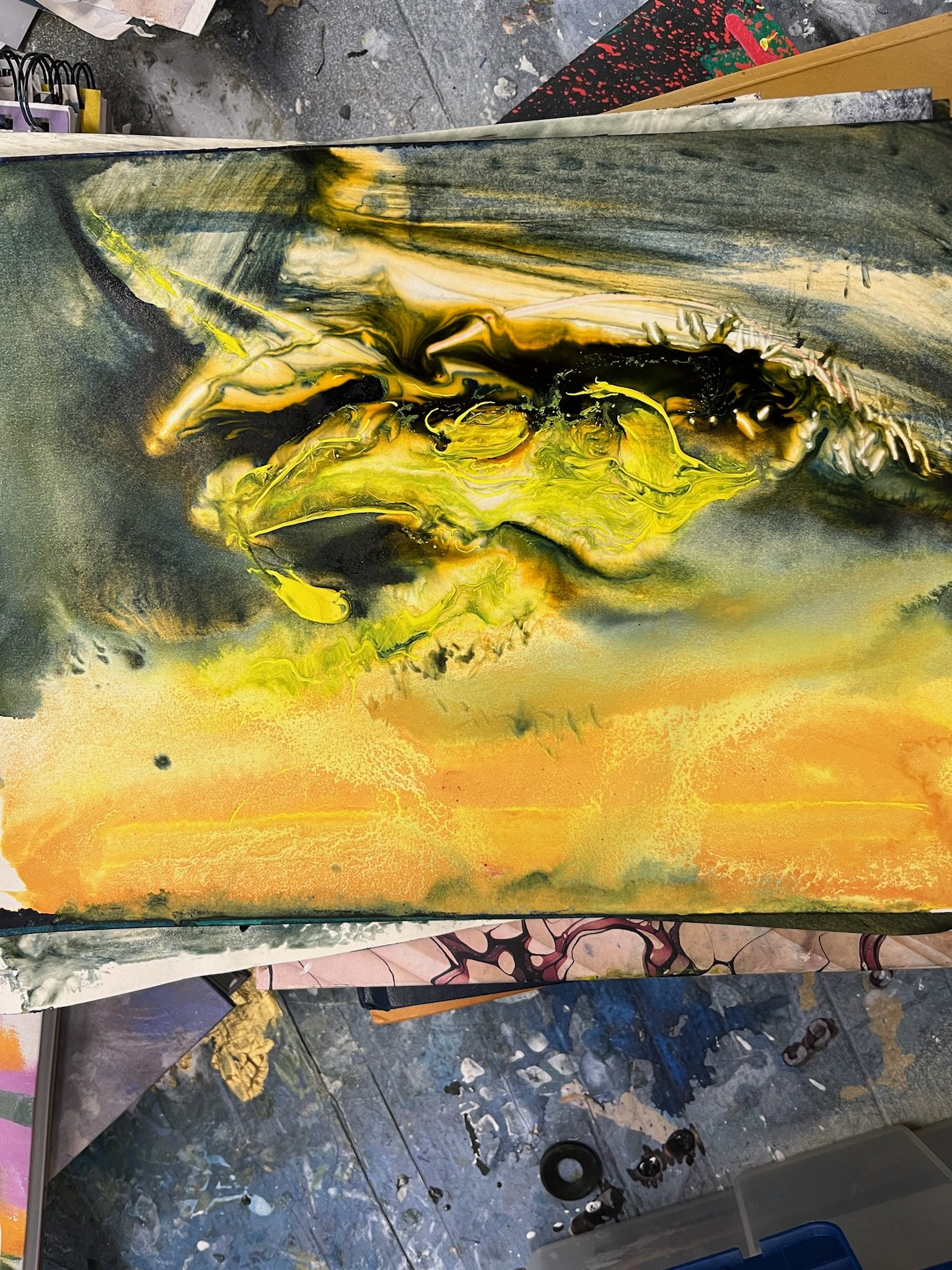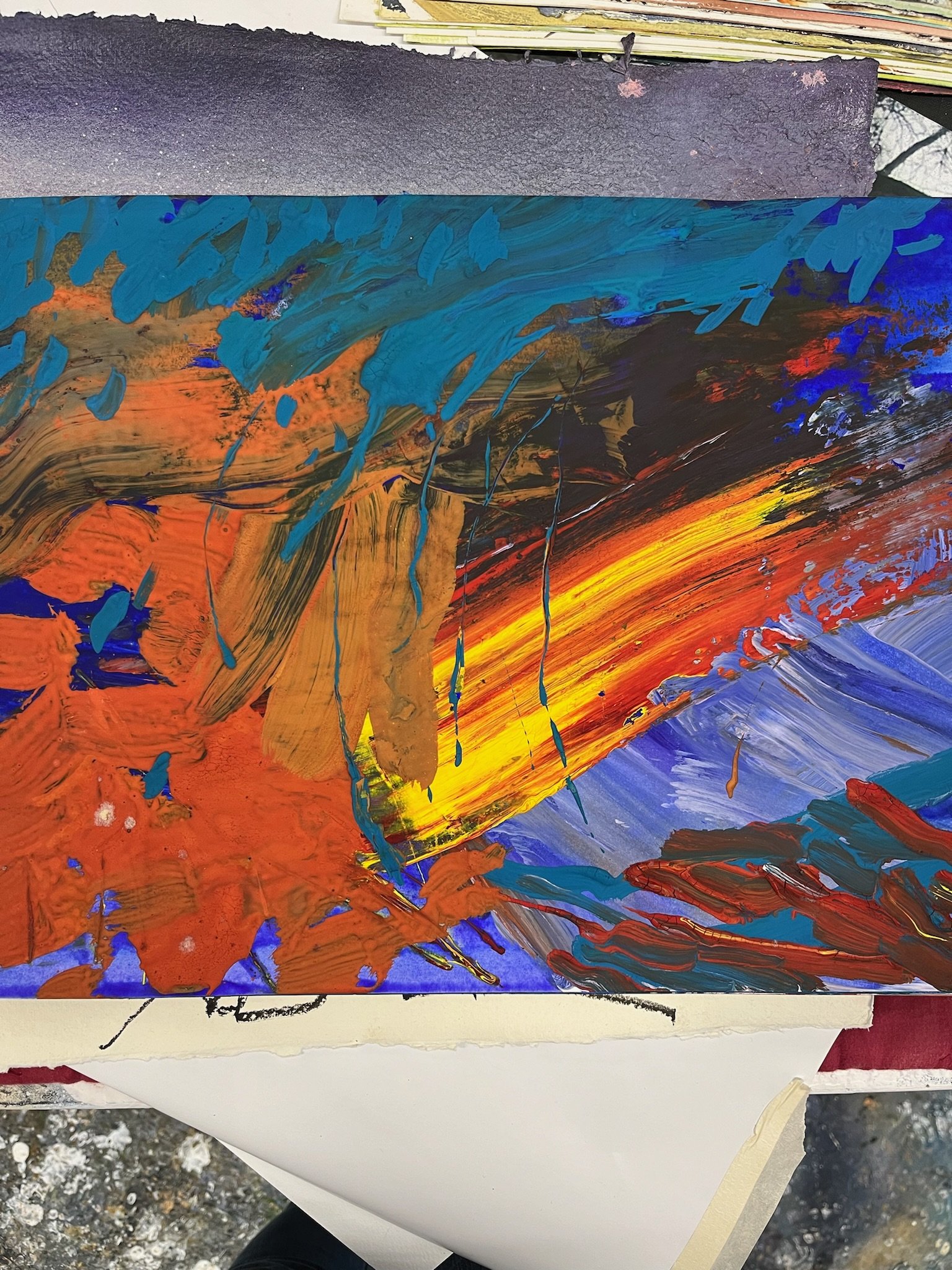The '90s were a defining era in my artistic journey, a time when my dedication to art truly took shape. But let's rewind a bit further to where it all began—during my GCSEs. It was then that I discovered my dyslexia, which made subjects like English and maths a challenge. Thankfully, I had an incredible art teacher who saw potential in my creativity. I poured my energy into art, focusing on honing my drawing skills, and by the age of 16, I had a portfolio that paved my way to a diploma in art and design at Reigate School of Art and Design.
Surrounded by mature students, their commitment and work ethic deeply influenced me. It was an environment that fostered growth and dedication, providing a strong foundation for the years ahead. During my diploma, I explored various mediums but found a particular love for fine art painting. This passion led me to the Surrey Institute of Art & Design (it merged with other Art organisations to form the prestigious UCA - University for the Creative Arts), where my portfolio and interview was key in securing my place.
The degree program was intense, especially the first year, filled with rigorous life drawing classes. It was all about refining skills, learning to capture the figure with precision. Yet, I was drawn to the landscapes, to the expressive power of paint. A trip to Scotland in my first year introduced me to the works of Constable and Turner, but it was the St. Ives group artists like Patrick Heron and Peter Lanyon who resonated with my emerging style—their manipulation of paint to express feeling and place was captivating.
Sketchbooks became my laboratory. January of '95 marked a significant point in my artistic development. I began to question how mediums interact on paper, how they convey emotion and atmosphere. It was a period of relentless experimentation, seeking to understand the dialogue between paint, brush, colour, and their effects.
This exploration was the cornerstone of finding my unique voice—an artist's signature style. It wasn't just about technique; it was about how I saw the world and expressed it through my art. My degree show, a culmination of this period, sold out completely, affirming my path as an artist.
MA process-based work, 1997
The end of my degree was not an endpoint but a transition to further growth. I joined a Master's program in Barcelona, where I was one of the few selected from hundreds of applicants. Immersed in a city rich with art history and surrounded by extraordinary talent, my process evolved. Influenced by process-based painters like Mark Francis and James Martin, I embraced the idea that the process itself could captivate and be the art.
The piece from my Master's program that I still hold represents more than a finished artwork—it embodies the exploration of chromatography, the manipulation of paint that goes beyond creating light and drama. It's abstract, yes, but also a gateway for the viewer to immerse themselves into the piece, to find their own meaning within the strokes and the story of the paint.
So, that's how the first decade of my career unfolded, an era of learning, experimenting, and beginning to understand the infinite possibilities that art holds.
Stay tuned for the next part of this series, where I'll delve into the transitions and milestones of the following decade.*













